Given the fact that the United States is in the middle of a presidential cycle, one subject has received a backbench status when compared to terrorism and immigration. Given that Washington's total debt now looks like this:
…and this:
…and that the debt has grown from $10.632 trillion to its current level of $18.99 trillion, an increase of $8.36 trillion or 78.6 percent since President Obama took office, one would think that it would get top billing on the numerous debates that both parties have participated in so far.
An updated examination of the federal debt and deficit issues by the Council on Foreign Relations provides us with a sense of where the problems lie and when the debt and deficit issues will reach a crisis point. While Washington is busy patting itself on the back over its recent "progress" on reducing deficit spending from over $1 trillion annually (or 10 percent of GDP) back in 2009 to 2012 to its current level of $435 billion or 3 percent of GDP in 2015, this "progress" will prove to be very short-lived.
Let's take a brief look at the recent growth in America's federal debt. In the early 2000s, the United States had a debt-to-GDP level that was well under control as shown on this graph from FRED:
In fact, America's net public debt as a percentage of GDP was only 34 percent in 2000 compared to 53 percent for the rest of its G7 peers. As last as 2007, the U.S. net public debt-to-GDP ratio was only 35 percent. This changed dramatically over the period from 2008 to 2012 thanks to massive stimulus intervention by the federal government which pushed to net public debt-to-GDP ratio to 81 percent in 2016, on par with the 82 percent ratio seen in its G7 peers. So much for the debt advantage.
What lies ahead? Over the ten year period out to 2025, the federal government's debt situation is projected to remain relatively stable with debt levels increasing by only a few percentage points. While this is somewhat comforting, in fact, debt levels will still be well above their long term average, setting Washington's fiscal course on a dangerous path. Looking past 2025, the debt situation reaches the danger zone with public debt reaching 110 percent of GDP or more, the same level that it reached during the Second World War when the federal government ramped up its war machine. Here is a graphic showing the debt mountain of the future:
Thanks to the Medicare, Medicaid and Social Security entitlements that are currently "owing" to baby boomers, the debt-to-GDP ratio could rise as high as 175 percent by 2040, putting the United States in second place among all thirty-four members of the OECD, trailing only Japan. Here is a graph showing how entitlements will grow over time as a percentage of GDP:
By 2040, 41 percent of tax revenues (as a percentage of GDP) will be needed to cover the cost of the total increase in elderly benefits.
In addition to the entitlement "tsunami", the mounting interest on the accrued debt will consume a larger and larger portion of the federal budget as shown on the middle panel of this graphic:
Interest on the debt will become even more of a problem if/when interest rates rise. Here is a graph showing why Congress has been lured into a debt danger zone since the Great Recession:
Right now, interest payments on the debt are roughly 1.3 percent of GDP, down from a peak of 3.2 percent of GDP in 1990. This is thanks, in no small part, to this:
The Federal Reserve has proven to be Congress' best friend since it began its monetary policy experiment during the Great Recession.
There is another issue associated with the growing federal debt level. Here is a graph showing how foreign ownership of federal debt has increased over time:
Right now, foreign entities own $6.126 trillion in America's federal debt. China and Japan are the two largest holders of Treasuries with China owning $1.265 trillion and Japan owning $1.145 trillion. This makes the United States extremely vulnerable to outside and unexpected geopolitical forces. Largely because the United States has the world's largest and most robust economy, the United States dollar remains the reserve currency of choice. Right now, because of the massive volume of U.S. marketable debt, it is a very liquid asset that investors can buy and sell without worry. Even though the debt trajectory is unsustainable, investors are banking on the fact that eventually, Congress will get its fiscal act together even though the current reality would suggest otherwise.
While the danger posed by the mounting United States federal government debt is unlikely to result in a default (hopefully), it will create a situation when lower economic growth rates become structural since mounting public debt levels consume capital that could be used for more productive purposes. In fact, the Congressional Budget Office estimates that America's GDP will be 2 percent smaller in 2040 because of the high debt level In addition, accruing ever higher levels of debt may result in the perception that the quality of the debt is decreasing and that risk is rising, resulting in investors demanding a higher interest rate for the risk that they are taking on. The only solution is to ensure that debt growth levels remain slower than economic growth levels, that is, the national debt-to-GDP ratio either remains steady or decreases with time.
Let's close with this graphic from the CBO 2015 Long-Term Budget Outlook showing the size of the sacrifices that would be necessary to keep the debt level under control:
If Congress acts now, they will have to reduce non-interest spending or increase revenues by 1.1 percent of GDP to keep the federal debt as a percentage of GDP at its current level in 2040. If Congress waits until 2021, they will have to cut spending or increase revenues by 1.4 percent of GDP. If they wait until 2026, the spending cuts or revenue increases rise to 1.9 percent of GDP. This shows us how much pain American taxpayers will face thanks to a long history of Congressional inaction on the key issue of our lifetime.
Click HERE to read more of Glen Asher's columns
You can publish this article on your website as long as you provide a link back to this page.


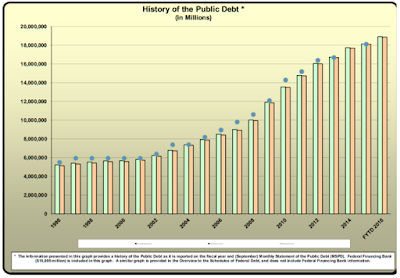

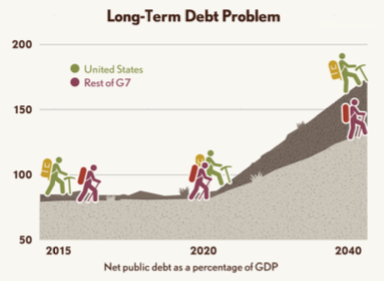
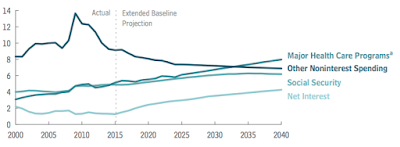
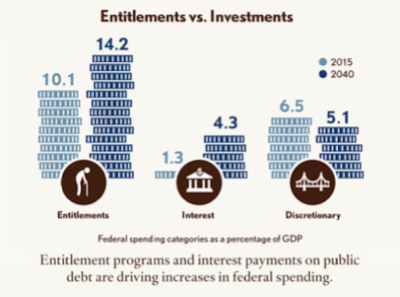
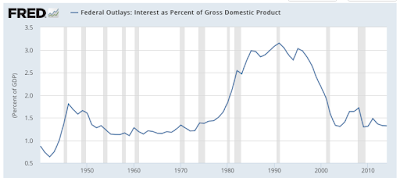
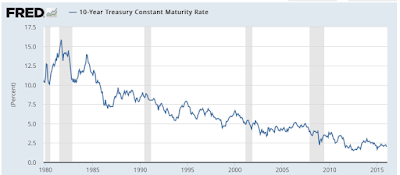
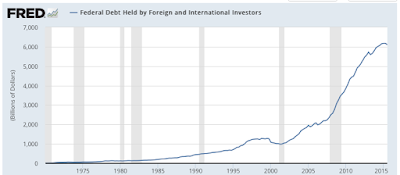
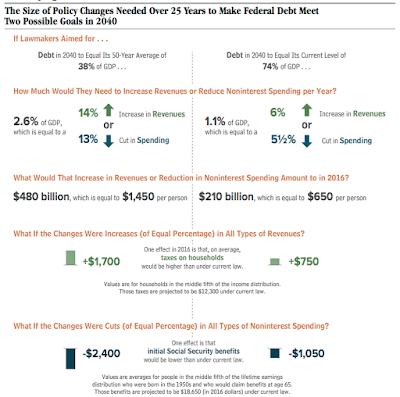
Be the first to comment